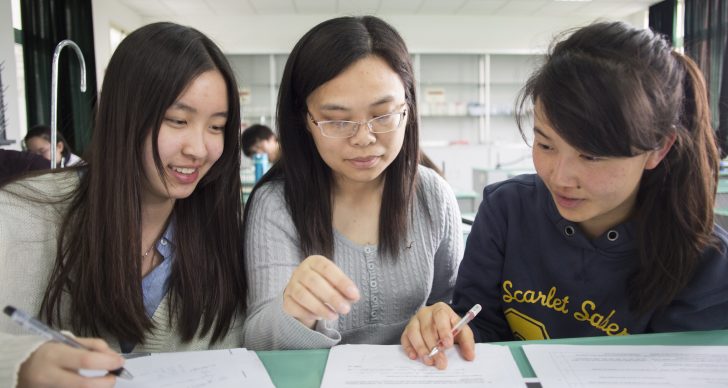In August 2008, my colleague Taosha and I began teaching Cambridge International AS & A Level Economics at a Cambridge International Centre (CIC) attached to the Shanghai Normal University.
Economics was a course favoured by parents but feared by students. Our biggest challenge lay in improving the learning experience for pupils whilst boosting exam performance. In this post my aim is to give you a glimpse into how we overcame this challenge.
A bit of background first
Generally speaking, Chinese High School students studying Cambridge International AS Level programmes have a limited English vocabulary. As such, we recognised that it would be very difficult and time-consuming to teach our students complex content in English.
We began by looking at the Content and Language Integrated Learning model (CLIL) for ideas. Broadly speaking, this model looks at teaching both the subject and the language. It can be summed up by the phrase, ‘using language to learn, learning to use language’.
In developing our plan, we also considered Jim Cummins’ “Common Underlying Proficiency” where content acquired in one language is available as knowledge in another language. As Cummins said, “Conceptual knowledge developed in one language helps to make input in the other language comprehensible.” We also took into account the value of background knowledge, our hypothesis being based again on Cummins research that knowledge learned and understood in the first language would be available for processing in the second language.
Given our pupils’ limited English vocabulary, we decided to teach knowledge and understanding in their first language; Chinese. Taosha taught these classes. My focus was on the higher order thinking skills of analysis and evaluation, taught in English.
Our students began to think for themselves
Given how much our students were progressing, Taosha suggested that she should also incorporate higher order thinking skills into her teaching. Her classroom would be bilingual, with teaching and learning taking place in both Chinese and English.
From that point on I concentrated on evaluation and economic essay writing. What was interesting was that after the first mid-term exam, most students were writing essays that were to the point and in good English. Some of our more advanced students were even beginning to demonstrate heuristic creative capabilities in their writing!
The key to success
A key to our success was Taosha’s approach in class. She ensured strong knowledge and understanding, tested by multiple choice. She made sure our students could explain why ‘’a, c and d’’ were incorrect while ‘’’b’’ was the correct answer. Examiner reports (provided by Cambridge) indicated that candidates’ average marks were around 60% correct. Our students scored above 90% – a significant difference!
Another key point was our adherence to teaching the same curriculum item in the same class week. This helped to reinforce learning.
What were the results?
In June 2009 our students sat their Cambridge International AS Level exams. 45% of our class achieved Grade A. The following year, 40% achieved either Grade A or A* in the second year of the programme.
The best part
News of our how well our students had performed led to an oversubscription of students for the 2009 academic year. It would appear that Cambridge International A Level Economics was no longer a course feared by students.





